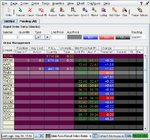Hi Jerry,
I'm enjoying the thread, although I struggle to keep pace with it. If it was a stock, it could only be GOOG! I don't wish to disrupt the thread or to take it off on a red herring, so let me know if you want this post deleted and I'll do so, happily. That said, I thought I'd pose my questions to you here in public rather than via PM, as other subscribers to the thread may be interested in your answers.
I would like to know what role your Point & Figure charts have in your trading. Do they have primacy over candlestick charts and/or CCI and the other indicators that you use? Alternatively, perhaps you use them as confirmation signals? Or, maybe they have an entirely different use altogether? Any insights into the importance and value you place upon them as well as your views on how they may best be utilised, would be much appreciated.
Many thanks,
Tim.


